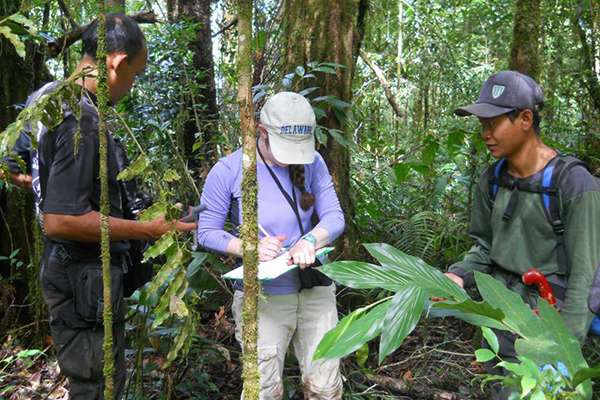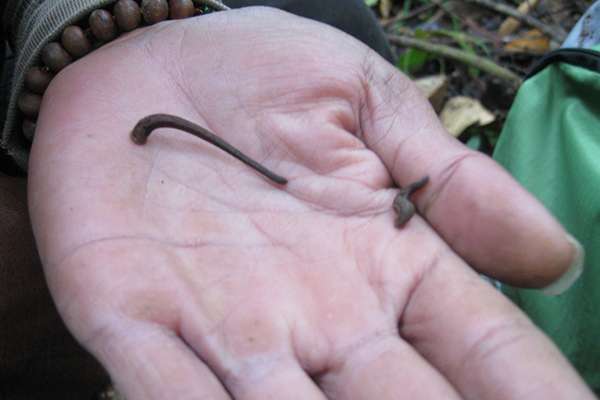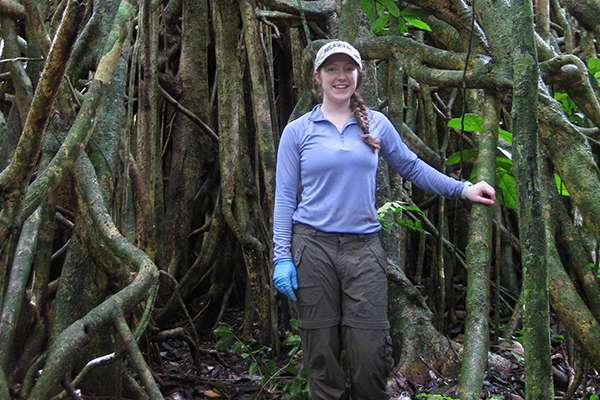Using leeches to measure mammal biodiversity

In order to get a better grasp on the biodiversity of mammals in Sumatra, University of Delaware graduate student Sarah Weiskopf spent two weeks collecting leeches in Bukit Barisan Selatan National Park and conducting genetic analyses of their blood meals.
Weiskopf, a master's degree student in the Department of Entomology and Wildlife Ecology in UD's College of Agriculture and Natural Resources, said the study came about when Kyle McCarthy, assistant professor of wildlife ecology and her adviser, came across a recent paper that used leeches to extract mammal DNA in a study in Vietnam.
For this project, Weiskopf collected 200 samples from two field sites and said that leeches could be an effective new method to gauge the total biodiversity of an area.
"Right now, tropical mammal surveys are typically done with camera traps and they don't get all the species, especially arboreal species—ones that live in the trees—or ones that might be too small to trigger them," said Weiskopf, who worked with Roswitha Muntiyarso, a graduate student from Universitas Indonesia, on the project.
Both of the study sites Weiskopf used had camera trap data gathered in a previous study, which will allow her to compare the results of the leech data with the camera data.
"The camera trap data has been analyzed already so we do have an idea of what's there and we want to see if the leeches show the same results, or if they collect even more or different species than we saw on the cameras," said Weiskopf.

Weiskopf explained that at one site the researchers collected leeches from the same locations that the cameras were placed and at the other site they used random sampling to decide where to collect the leeches.
When it came to gathering the leeches, Weiskopf said that they were pretty easy to find as they were "pretty much all over. We collected most of them from the ground, so we would look down and just see them crawling."
As for any reservations about working with leeches, Weiskopf said she got used to them. "I did get a few leech bites, and they're not the most pleasant, but I think it will be really cool if it works. Since leeches are so easy to collect, it will be a more convenient method for sampling biodiversity."

Weiskopf said she will use an extraction kit to get the DNA from the leeches to sequence and analyze.
She also said that she had a great time in Indonesia.
"It was really beautiful and different from anywhere I've been before. The families I stayed with were very welcoming. It was great way to experience Indonesian culture and I'm glad I had the chance to go," said Weiskopf.
Provided by University of Delaware



















